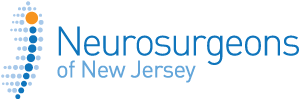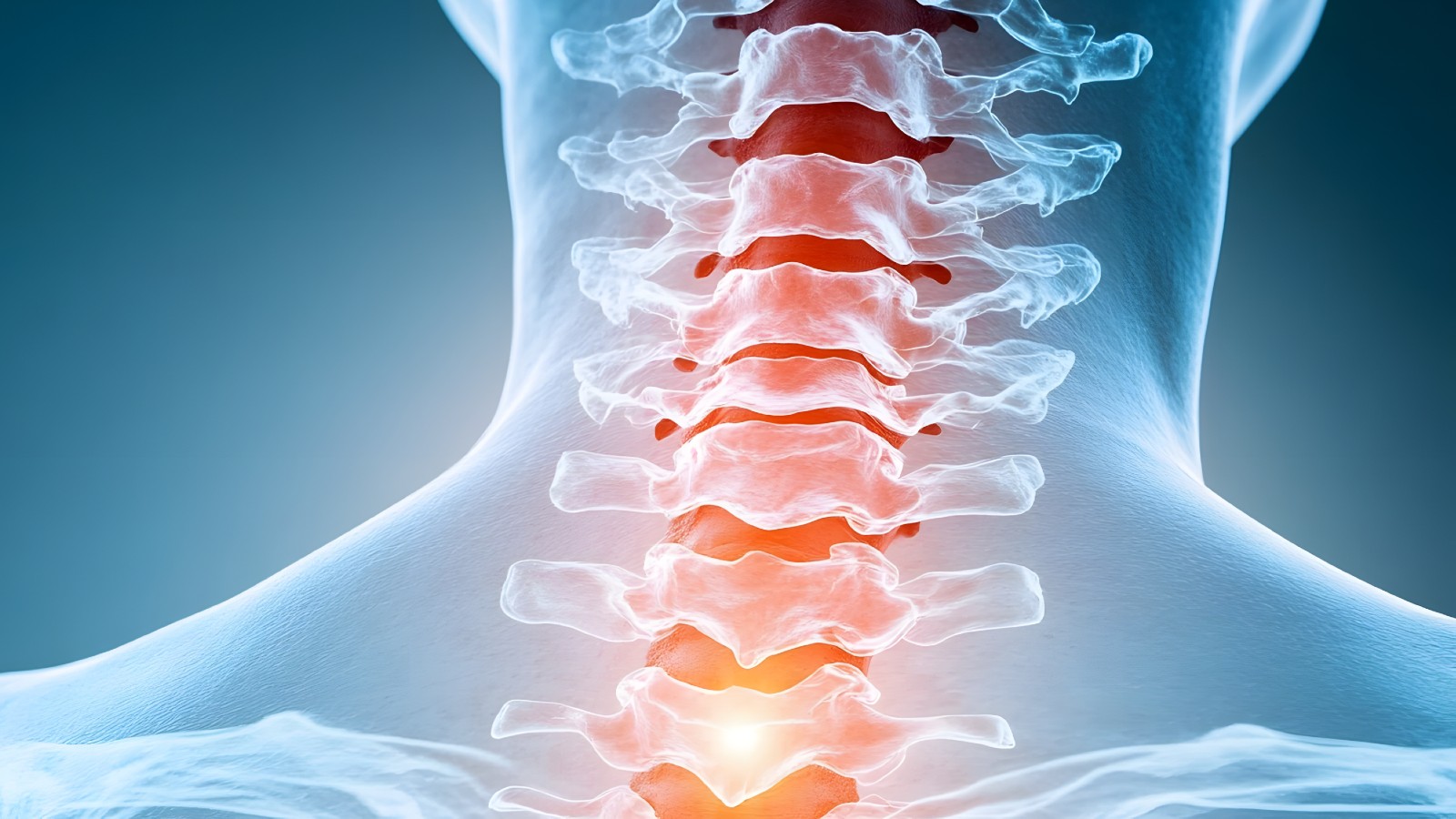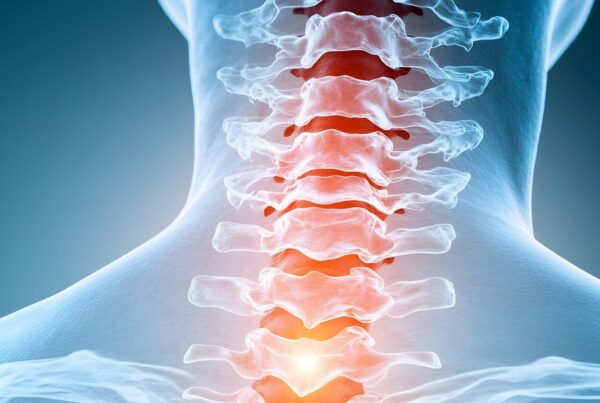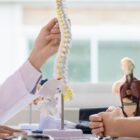Neck surgery can help relieve severe pain, nerve problems, and movement issues. The time it takes to recover depends on which parts of your neck are involved, the type of surgery, and your health factors. This guide explains what to expect after surgery, focusing on physical therapy and healing for different neck areas.
Understanding Cervical Spine Anatomy
To understand your recovery, it helps to know how your neck is built and how different parts affect your body functions. Your neck (cervical spine) has seven bones called vertebrae (C1-C7).
The upper neck (C1-C2) helps you turn your head. The middle and lower neck (C3-C7) lets you bend your neck forward and backward and connects to your upper back. This setup means that surgery on different parts of your neck will affect your recovery in various ways.
The C3-C4-C5 area contains critical nerve pathways that control breathing muscles, neck movement, and shoulder movement The C5-C6-C7 areas provide sensation of the arm, control arm movement, grip strength, and hand coordination. Knowing which parts of your neck need surgery helps set realistic recovery goals.
Common Neck Surgery Procedures
Surgeons can fix neck problems in several ways, depending on your condition and which vertebrae are affected.
Anterior Cervical Discectomy and Fusion (ACDF)
ACDF is a common procedure for herniated discs and spinal canal narrowing. Your surgeon makes a small cut in the front of your neck to remove the damaged disc and relieve pressure on nerves or the spinal cord. They also remove any bone spurs that may be pressing on nerves. A bone graft is placed to join the vertebrae together, often secured with plates and screws for stability.
This surgery works well for problems at the C3-C4-C5-C6-C7 levels. Recovery takes longer if multiple levels need to be fused compared to single-level procedures.
Cervical Disc Replacement
This surgery is similar to ACDF but replaces the damaged disc with an artificial device that preserves movement instead of fusing the spine. This can reduce strain on nearby vertebrae and lead to faster recovery than fusion. For patients with disc problems at one or two levels, like C5-C6 and/or C6-C7, disc replacement may be a good option that maintains more natural neck movement.
Posterior Cervical Procedures
Some conditions require surgery through the back of the neck. A cervical laminectomy removes part of the vertebra to create more space for the spinal cord. A foraminotomy widens the opening where individual nerves exit the spine. Posterior cervical fusion stabilizes the spine using rods, screws, and bone grafts while a cervical laminoplasty creates space without removing part of the vertebrae and maintains mobility.
These approaches may be needed for complex cases involving multiple levels from C3 to C7.
Recovery Timeline for C3-C4-C5-C6-C7 Neck Surgery
Recovery follows a general pattern, though timing varies based on which levels were treated, number of levels treated, and which procedure was done.
Right After Surgery (1-2 Weeks)
The first two weeks are crucial for starting your healing process. Most patients stay in the hospital for 1-3 days, depending on their surgery. Pain management is important during this time, with medications to control discomfort while you begin to move around.
Patients may need to wear a neck collar or brace for support after fusion surgery. Your activities will be limited to gentle walking and basic self-care, with clear instructions for wound care. For those patients undergoing surgery from the front of the neck, you may experience discomfort when swallowing. This is usually worse for patients undergoing surgery at the upper levels of the spine, C3-C4. Swalloing issues typically resolves after 2 weeks.
Patients may experience significant improvement in arm pain at this point, although weakness and/or numbness may take longer to improve.
Early Recovery (2-6 Weeks)
If required, you might need to wear a neck brace for 4-6 weeks, especially if you have undergone a multi-level fusion or have poor fusion potential. If you are required to wear a brace, you should avoid driving, lifting more than 5-10 pounds, or sitting for long periods.
Physical therapy may start around 4-6 weeks, beginning with gentle movement exercises to prevent stiffness without disrupting healing. Your first follow-up appointment will happen during this time to check your progress and make sure your surgical site is healing properly.
Middle Recovery Period (6-12 Weeks)
This phase varies based on the type of procedure performed. Physical therapy progresses to include more active strengthening of neck and shoulder muscles. Many patients can return to desk jobs around 6-8 weeks after surgery, however for more labor intensive occupations you may require more down time.
Extended Recovery (3-6 Months)
For fusion procedures, X-rays will begin to show bone growth across the fusion site between three and six months after surgery. This is an important milestone that allows you to do more activities. Your physical therapy will focus on functional restoration and training specific to your job to help you return to your daily life and work.
Most patients see significant improvement in their symptoms by this time, though complete nerve recovery can never be guaranteed and may take longer if significant deficits existed before surgery. Some patients notice immediate relief after surgery, while others experience gradual improvement over several months.
Full Recovery (6-12 Months)
The full benefits of neck surgery typically happen between six months and one year after the procedure. For fusion surgeries, complete bone healing with bone formation across the fusion site is expected. Most patients reach their maximum improvement during this time and should be participating in desired activites and sports (with some modifications).
Long-term lifestyle adjustments become essential during this phase, especially for patients who have had extensive procedures involving multiple levels. Learning to protect your neck while staying active is key to long-term success after neck surgery.
It's time to get back
to doing what you love.
Long-Term Recovery and Management
Successful long-term results after neck surgery depend on continued attention to neck health. Regular exercise to maintain neck strength and flexibility, along with proper desk and home setups, becomes essential. Weight management helps reduce stress on your neck, while posture training helps prevent future problems.
After fusion surgeries, especially multi-level procedures, there’s an increased risk of problems in adjacent vertebrae. Learning to protect unfused segments through appropriate activity changes and body mechanics becomes important for long-term spine health. Regular check-ups allow for monitoring of early signs of new problems, and early intervention is recommended to address minor issues before they become major.
Patients who undergo extensive C3-C7 surgeries often benefit from adaptive approaches to daily activities. This might include modified exercise routines, stress management techniques to reduce tension in neck muscles, and quitting smoking (which is critical for fusion success and overall spine health). Working closely with your healthcare team to develop these long-term strategies will help maximize the benefits of your neck surgery.
Why Choose Neurosurgeons of New Jersey
Neurosurgeons of New Jersey has been voted the #1 Surgical Practice in New Jersey for Neurosurgery. We offer exceptional care across 11 convenient locations throughout the state. Our practice is distinguished not only by our top ranking but also by the advanced education and numerous prestigious awards held by our doctors.
The complexity of neck surgery requires specialized expertise and a comprehensive approach to care. Our team of internationally recognized spine surgeons brings decades of combined experience to each case and uses the latest technology to ensure the best outcomes.
We accept and work with many health insurance networks, including Aetna, Horizon Blue Cross Blue Shield, Oxford/United Healthcare, Cigna, No-Fault for New Jersey Motor Vehicle Accidents, the Empire Plan (NYSHIP), and Workers’ Compensation. Even if your insurance is not listed, you may still be eligible for significant coverage, making high-quality neurosurgical care accessible to many patients.
Our approach to neck surgery focuses on generating a unique, individualized treatment plan, not just on the operation itself but on your entire recovery journey. From education before surgery to rehabilitation and long-term follow-up care, we partner with you at every step to ensure the best possible outcome after your cervical surgery.
Contact Us
To schedule a consultation with our neck specialists, please call us at 551-284-3265 or request an appointment through our website. Our team is ready to provide personalized care and expert guidance throughout your surgical journey.

About Ridgewood
Our team of board certified physicians, located in Ridgewood, New Jersey, are dedicated to bringing you the latest developments and treatment options for spinal surgery. We strive to produce the most clarified & clear content to help you make informed decisions on your medical journey. The road to feeling like your true self should not feel lonely- Let us help you. Please call us to schedule a consultation and speak to one of our team members.






